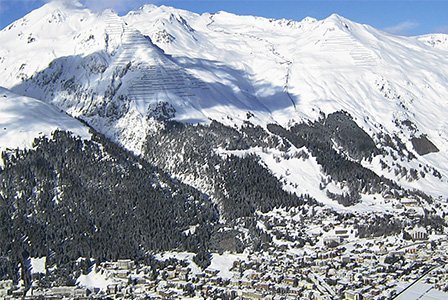An effective avalanche protection depends on many factors: protection forests, protection barriers and an avalanche warning system are for example important prerequisites. This article outlines how avalanches happen and what you can do about it.
In the books, avalanches are defined as a rapid movement of snow over a distance of more than 50 meters. Over shorter distances, they are called snowslides. Very slow movements of snow from a few centimeters up to several meters a day are referred to as glide avalanches. Avalanches can exert forces of up to 100 tons per square meter and reach a speed of up to 300 km per hour.
The occurrence of avalanches depends on the weather conditions. Heavy snowfalls, snow drifts caused by wind, sudden temperature increases or rain that saturates the snow layer can significantly increase the danger of avalanches. The basis of an effective avalanche protection lies in keeping danger zones clear. In addition, technical protective measures and in particular the work of the avalanche warning services is of utmost importance in the protection against avalanches.
Protection forests play a particularly important role in avalanche prone areas. With the rise of temperatures, weather extremes as well as provincial influence, protection forests are now under greater pressure than ever before. Harmful insects advance in ever higher altitudes and weaken forests. Lower precipitation and higher temperatures affect trees as well. Damages caused by browsing of game prevent the emergence of new trees, the bark is gnawed by peeling and the rubbing of antlers damages the trunk. Once the protective surface is destroyed, it takes decades before the forest can fulfill its protective function again.
Measures when risk is identified
In practice, in the assessment of avalanche danger there is no clear guideline on how to treat forests. Therefore, for the assessment of disposition and protective effectiveness the Austrian Research Centre for Forests has developed inter-institutional practical rule of thumbs.
First, the avalanche danger of a location must be determined. This is highly dependent on site characteristics such as the slope angle, shape (curtosis) and location, and snow depth and ground roughness.
Most research approaches start with a slope inclination of over 30°. However, this value cannot be considered in isolation as small loose snow slides occur in steep terrain inclined at 55° or more. In this field, the avalanche protection ability of forests decreases.
Relevant slope sizes vary between 20 and 50 m, where the steeper the slope, the shorter the overhang needed. Avalanches often occur at convexes, downward sharply steepened spots or breaks in slope. The greater the depth of the snow and lower the ground roughness, the greater the danger of avalanches.
When an avalanche prone area is located, the question regarding the protective function of forests is raised. Japanese researchers have a rule of thumb “that the average tree height should be about one and half to two times the depth of the snow so that enough trees (>50%) extend over the snow cover and can thus stabilize it”. This also complies with observations done in the Alps.
The evergreen cover (coverage) presents two important cause variables. The following applies: "An evergreen tree cover of 50-60% with the corresponding effective tree height and balanced distribution […] is sufficient to prevent the release of a dangerous avalanche. If the ever green cover is under 50% […], then the protective effect depends on the number of trees." Snags, either standing or felled across, should also be considered.
According to an article by ÖBf, in order to counteract the decline in protective forests, in 2011 alone more than 600,000 young trees were planted in protective forests in Austria. Next to spruce, mainly trees such as larch, pine or fir are planted, which make forests more stable. The spruce works quite well in the protection against avalanches. The spruce trees are dense and the snow collects on the crown, while the larch, which does not have any needles in winter, is especially stormproof and resistant to stone chipping.
For an effective and safe planning in avalanche prone areas, the careful observation and documentation of avalanche and torrential streams is required. On the basis of such data, complete hazard zone plans (in German lückenlose Gefahrenzonenpläne (GZP)) were developed and published in 2011 for the Austrian state Styria. In the process 1,250 avalanches and 3,200 torrential streams were integrated. Depending on their danger potential, danger zones are allocated to a danger class. For every danger zone, there are adapted consequences. The hazard zone plans serve as the basis for planning in the field of spatial planning, civil engineering and safety. It also helps to prioritize the planning of protective structures). The GZP are a special instrument of the risk prevention. This means that future construction projects will be directed to less or non-hazardous areas.
Tab. 1: Effective tree height depending on the depth of the snow and the slope incline.

Forest Crises Management Advisory Guide
Back to the main page of the Forestry Crisis Management Advisor Guide: Overview of the different topic collections
Back to the article overview in the: Topic Collection: Water in the Forest






